This Is How It Is
By Daleysi Moya
If there is a constant feature across all the critical exercises constituted by the work of Orestes Hernández (Holguín, 1981), it isthe artist’s inability to confine his creative process to one or more legible labels. Exegesis is based, of course, on the principle of interpretation, which more or less points toward the need to settle on an ultimate meaning that would anchor a multifaceted work of art. Fortunately, with Hernández such an approach is condemned to failure. This is due first to his poetics of instability, a system that leans toward dissonance and knocking familiar logics out of joint. Secondly, as he himself has recognized over time, it is due to his deliberate renunciation of metaphorization, in the conventional sense of the correspondence “A is B.” Metaphor can become a sort of shroud for an artist, swaddling the corpse of the living dead. For Hernández, one could say, A is B and C and D and Z. There are few creators out there like him, who would turn their backs on the semantic imperative.
We might be able to stay outside the margin of error if we acknowledge that his work demands other approaches, and that in order to hit bone and not go away emptyhanded we have to let ourselves be pulled along by his centrifugal dynamics. In this case, to read is to forget how much we take for granted, and to assume that for Hernández things do not refer, but rather “are,” in the same way that cold, hard reality tends to be the best source of analogies and misunderstandings. From these coordinates, we come to understand what mattersfor Hernández and for the present exhibition: This Is How It Is is situated in the operations—or “counter
operations," as he would have it—developed here, interventions that do not act on unique physical objects (a painting, a sculpture, a video) but rather on the language that generates them and the ways it brings modern rationality to crisis, or how we think what we think.
This Is How It Is consists of pieces that communicate with each other and that participate collectively in their creator’s uneven, disconnected universe. We find painting, sculpture, video, and expressions that ultimately end up orbiting around the conceptual, demonstrating that both the usual genres and the more recent ones are still “mental things.” Hernández has noted that the animations and sculptural objects in this series constitute a sort of extension of his paintings from the late 2000s, in that they feature similar beings, settings, mythologies, and ways of existing. Nevertheless, the line of continuity in this project is different, more powerful, which has to do with creating gaps and breaking down the door through which we gain entry into a work of art, breaking the barrier between reality and representation, and coming to grips with the fact that sometimes the game is played in reverse. Mario Montalbetti would say that “the poem produces thought without knowledge.” This idea wonderfully suits the work of Orestes Hernández because his pieces are indeed there to lead us to the terrain of “non-sense,” where things are still open questions.
Esto es así
Por Daleysi Moya
Hay una constante muy peculiar en todos los ejercicios críticos centrados en el trabajo de Orestes Hernández (Holguín, 1981), esta es, su incapacidad para circunscribir el proceso creativo del artista a una o varias etiquetas legibles. La exégesis, por supuesto, se basa en el principio de la interpretación, lo que más o menos viene a indicar la necesidad de fijar un significado último que le dé asiento al organismo multifactorial de una obra. Con Orestes, semejante proceder está felizmente condenado al fracaso. En primer lugar, porque la suya es una poética de la inestabilidad, un sistema inclinado a la disonancia y al desajuste de las lógicas aprendidas. Luego, porque él mismo ha reconocido –con el tiempo– su renuncia deliberada a la metaforización en el sentido convencional de la correspondencia: “a es b”. La metáfora puede convertirse en la mortaja de un artista, arropar el cadáver de un muerto viviente. Para Orestes, digamos, a es b, y c, y d, y z. Pocos creadores, como él, para virarle la espalda al imperativo semántico.
Tal vez podamos mantenernos fuera de la zona de error si reconocemos que su quehacer demanda aproximaciones otras, y que para tocar hueso y no irnos con las manos vacías hay que dejarse arrastrar por sus dinámicas centrífugas. Leer, en este caso, es olvidarse de cuanto damos por sentado, y asumir que para Orestes las cosas no refieren, sino que “son”, del mismo modo en que la realidad, pura y dura, suele ser la mejor generadora de analogías y equívocos. Desde estas coordenadas, vamos entendiendo que es lo importante para Hernández y para la muestra que ahora nos ocupa: Esto es así se sitúa en las operaciones – “contraoperaciones”, diría él– aquí desarrolladas, intervenciones que no actúan sobre el objeto físico y singular (la pintura, la escultura, el video) sino sobre el lenguaje que las genera y sus modos de poner en crisis la racionalidad moderna. El cómo pensamos lo que pensamos.
Esto es así está integrada por piezas que se comunican entre sí y que participan, de forma conjunta, del universo accidentado e inconexo de su creador. Hay pintura, escultura, video y manifestaciones que, en el fondo, terminan orbitando lo conceptual y demostrando que los géneros de siempre, y los más recientes, continúan siendo “cosa mentale”. Orestes ha dicho que las animaciones y los objetos escultóricos de esta serie constituyen una suerte de extensión de sus pinturas de finales de los 2000: similares seres, ambientes, mitologías, formas de existir. Sin embargo, la línea de continuidad en este proyecto es otra; algo más poderoso, algo que tiene que ver con abrir boquetes y echar abajo la puerta por la que le entramos a la obra de arte. Romper la barrera entre realidad y representación y asumir que el juego, a veces, se da a la inversa. Mario Montalbetti diría que “el poema produce pensamiento sin conocimiento”, una idea que se ajusta de maravillas al trabajo de Orestes Hernández. Porque sus piezas, en efecto, están ahí para llevarnos al territorio del “nonsense”, un sitio en el que las cosas se encuentran aún en estado de pregunta.
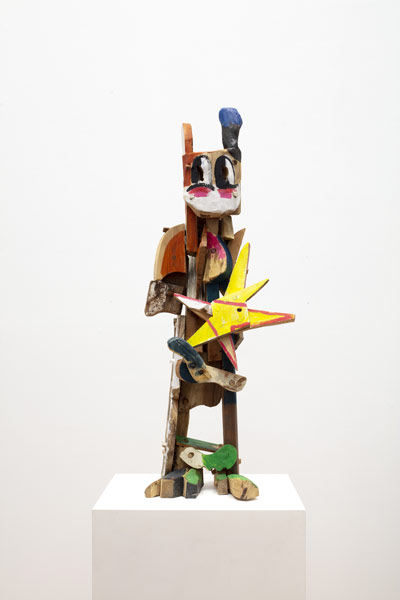
1
Playera, 2023
Escultura de madera ensamblada
92 x 30 x 35 cm
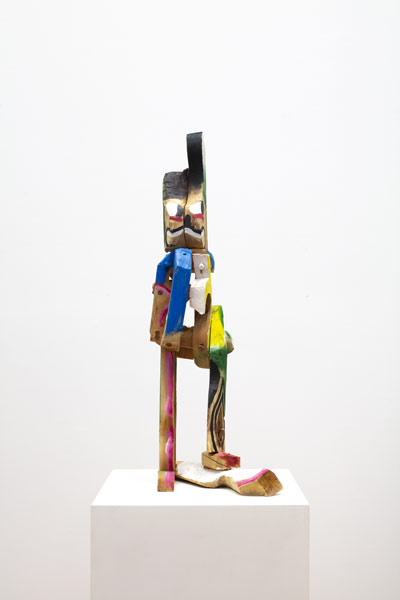
2
Aeropostale, 2023
Escultura de madera ensamblada
80 x 35 x 20 cm
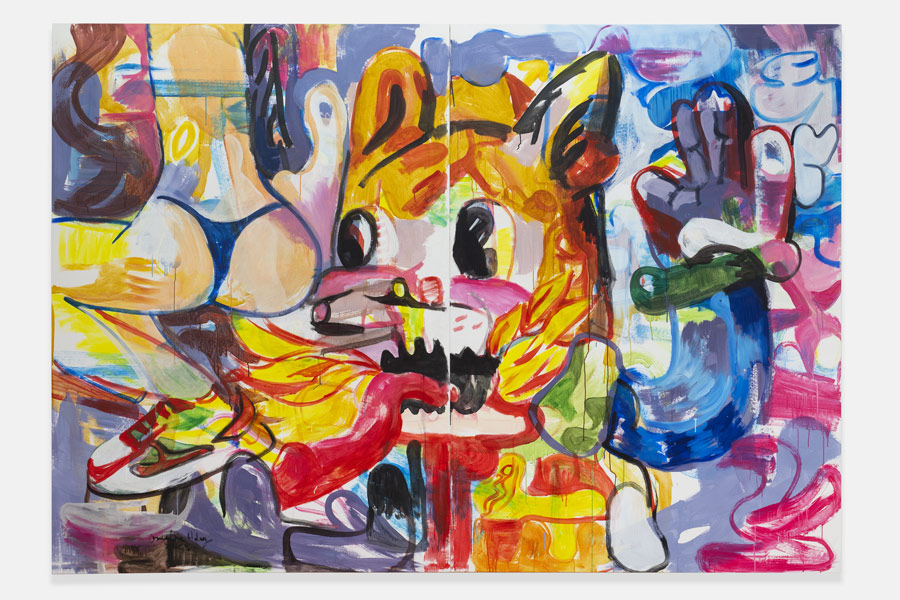
3
Splash, 2023
Acrílico sobre tela
Díptico: 206 x 298 x 3 cm
Cada uno: 206 x 149 x 3 cm
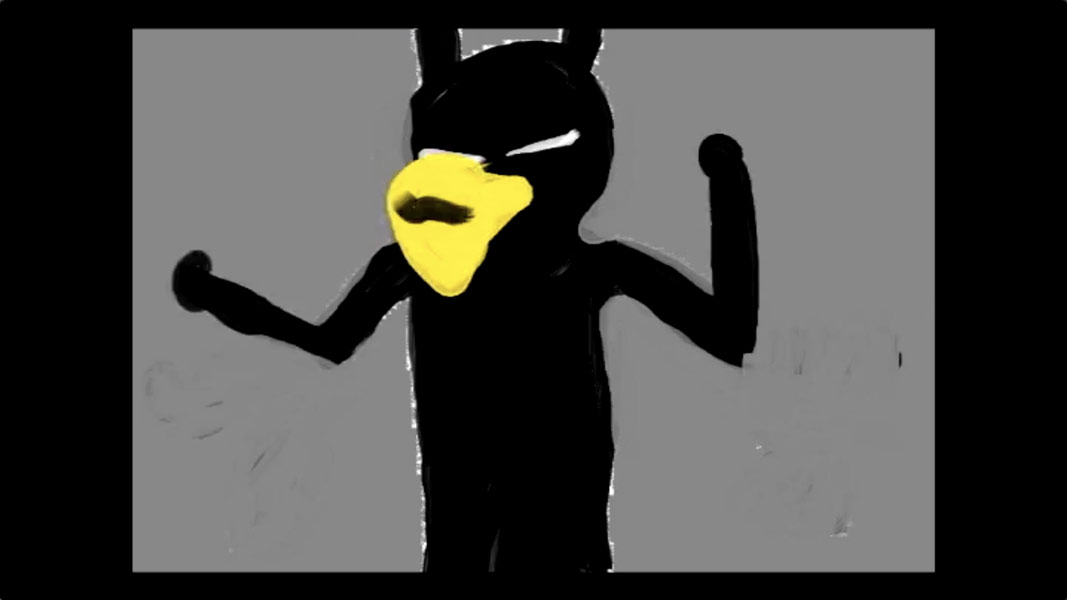
4
Absolutamente cierto, 2013
Animación en video
3'56"
2 de 3 más 1 AP
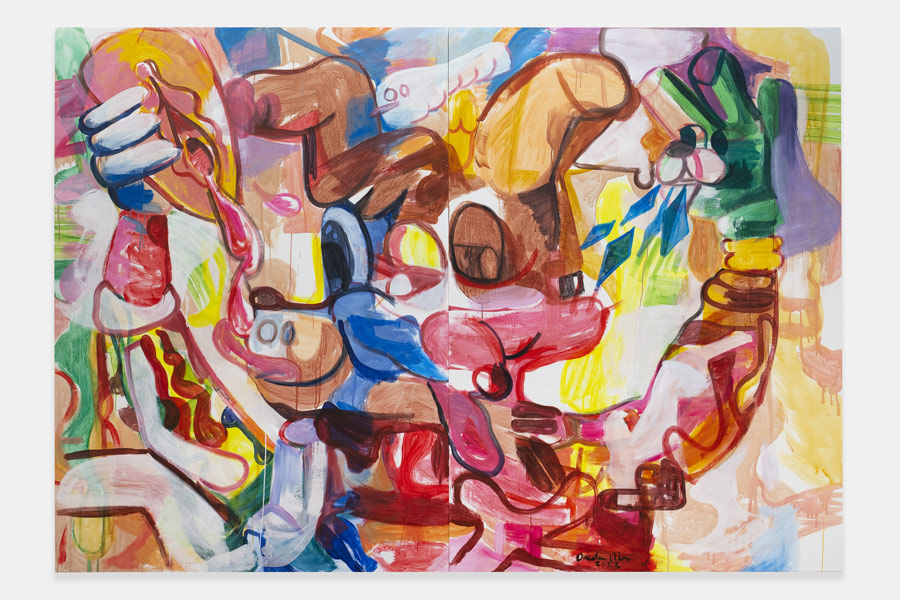
5
Sintetizador, 2023
Acrílico sobre tela
Díptico: 206 x 298 x 3 cm
Cada uno: 206 x 149 x 3 cm

6
Lollipop, 2023
Escultura de madera ensamblada
81 x 35 x 27 cm
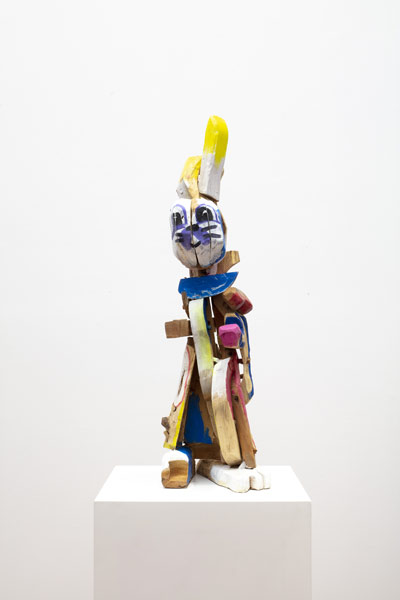
7
Tony, 2023
Escultura de madera ensamblada
83 x 25 x 25 cm

8
Manzana, 2023
Escultura de madera ensamblada
78 x 25 x 32 cm
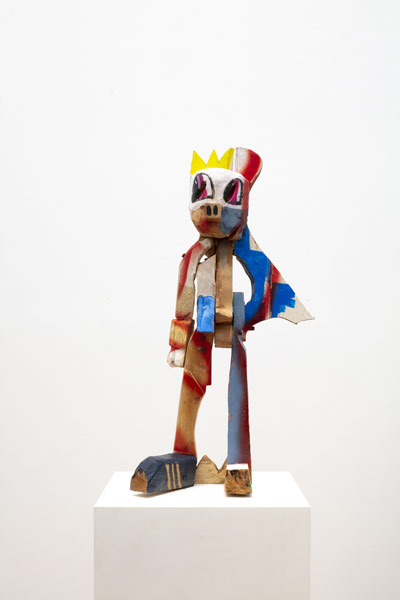
9
Sprite, 2023
Escultura de madera ensamblada
79 x 43 x 25 cm

1
Playera, 2023
Assembled wood sculpture
36.22 x 11.81 x 13.78 in

2
Aeropostale, 2023
Assembled wood sculpture
31.5 x 13.78 x 7.87 in

3
Splash, 2023
Acrylic on canvas
Diptych:81.1 x 117.32 x 1.18 in
Each: 81.1 x 58.66 x 1.18 in

4
Absolutamente cierto, 2013
Video-animation
3'56"
3 plus 1 AP

5
Sintetizador, 2023
Acrylic on canvas
Diptych:81.1 x 117.32 x 1.18 in
Each: 81.1 x 58.66 x 1.18 in

6
Lollipop, 2023
Assembled wood sculpture
31.89 x 13.78 x 10.63 in

7
Tony, 2023
Assembled wood sculpture
32.68 x 9.84 x 9.84 in

8
Manzana, 2023
Assembled wood sculpture
30.71 x 9.84 x 12.6 in

9
Sprite, 2023
Assembled wood sculpture
31.1 x 16.93 x 9.84 in

